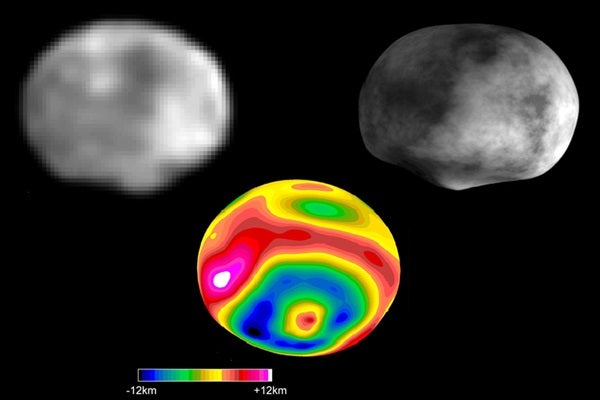At this resolution, the surface shows abundant small craters and textures such as small grooves and lineaments reminiscent of the structures seen in low-resolution data from the higher-altitude orbits. Also, this fine scale highlights small outcrops of bright and dark material.
You’ll find a gallery of images online:
http://www.nasa.gov/mission_pages/dawn/multimedia/gallery-index.html
Dawn returned the images to Earth December 13. Mission scientists plan to acquire data in the low-altitude mapping orbit for at least 10 weeks. The primary science objectives in this orbit are to learn about Vesta’s surface composition with the gamma-ray and neutron detector and to probe the interior structure of the asteroid by measuring its gravity.
At this resolution, the surface shows abundant small craters and textures such as small grooves and lineaments reminiscent of the structures seen in low-resolution data from the higher-altitude orbits. Also, this fine scale highlights small outcrops of bright and dark material.
You’ll find a gallery of images online:
http://www.nasa.gov/mission_pages/dawn/multimedia/gallery-index.html
Dawn returned the images to Earth December 13. Mission scientists plan to acquire data in the low-altitude mapping orbit for at least 10 weeks. The primary science objectives in this orbit are to learn about Vesta’s surface composition with the gamma-ray and neutron detector and to probe the interior structure of the asteroid by measuring its gravity.










